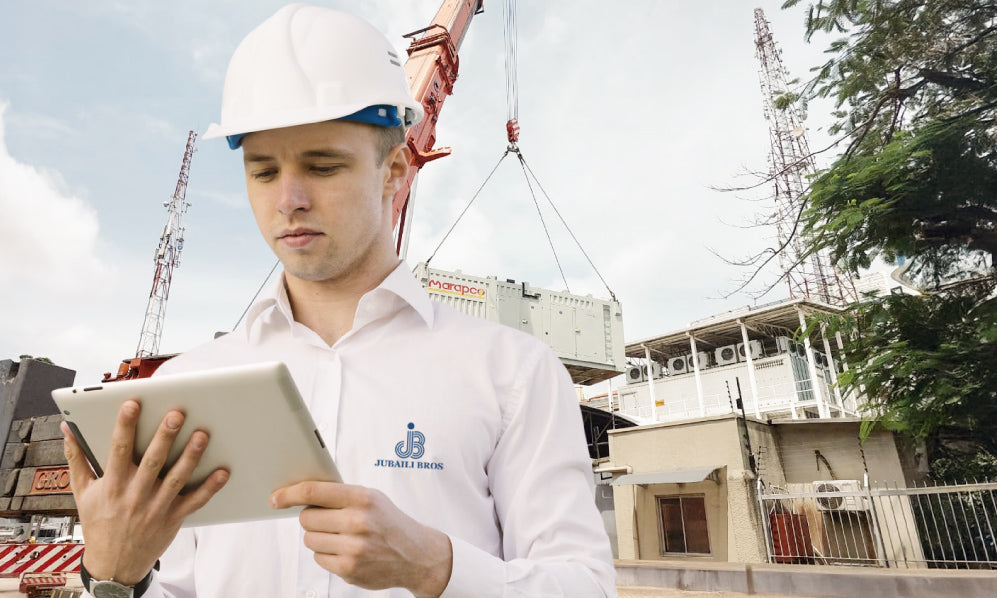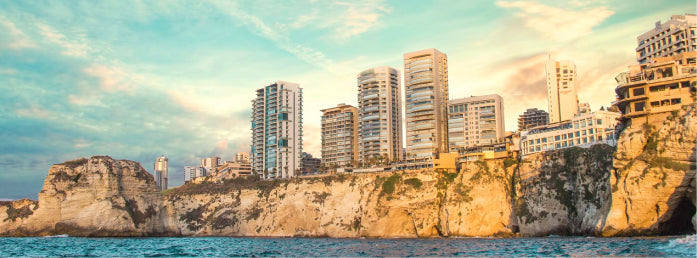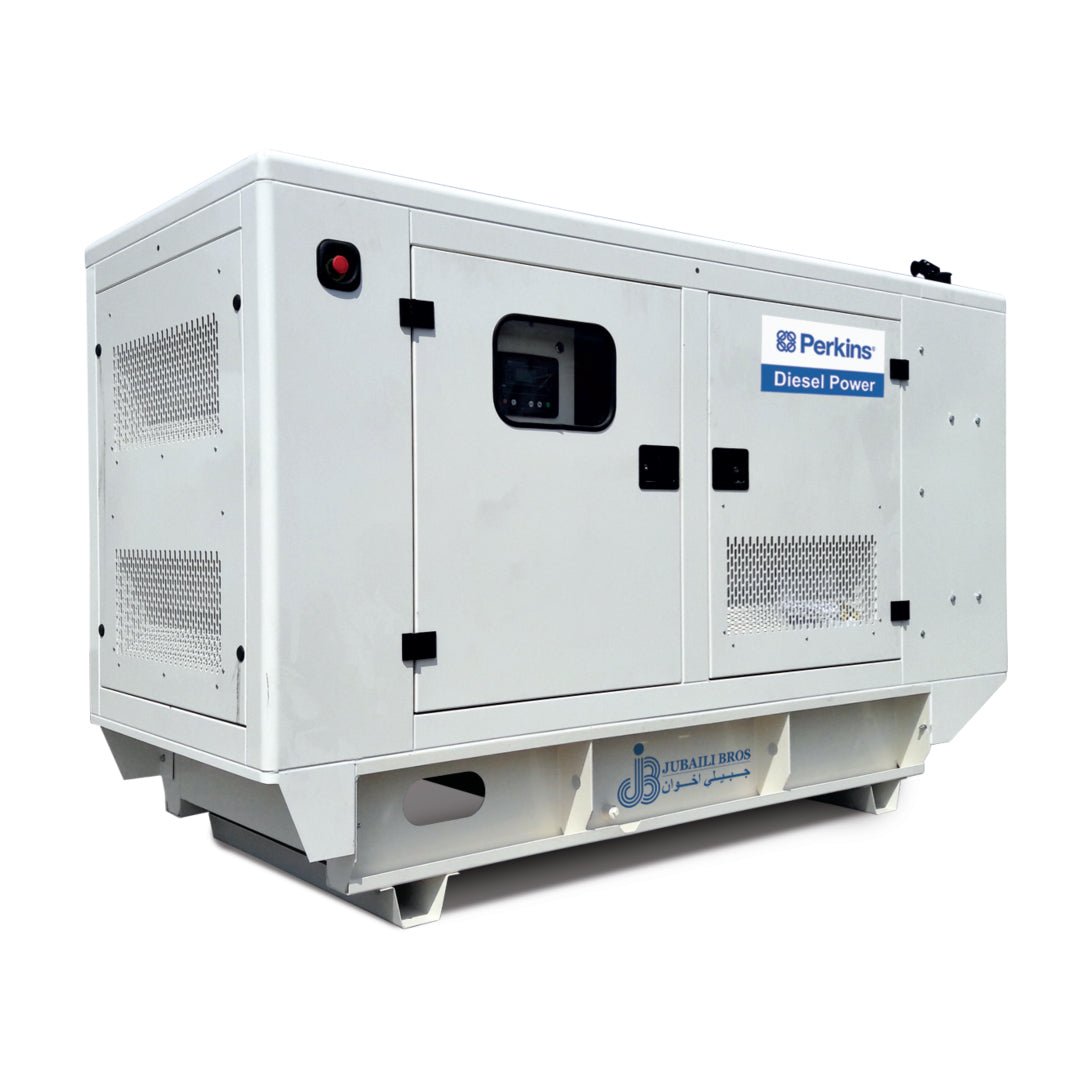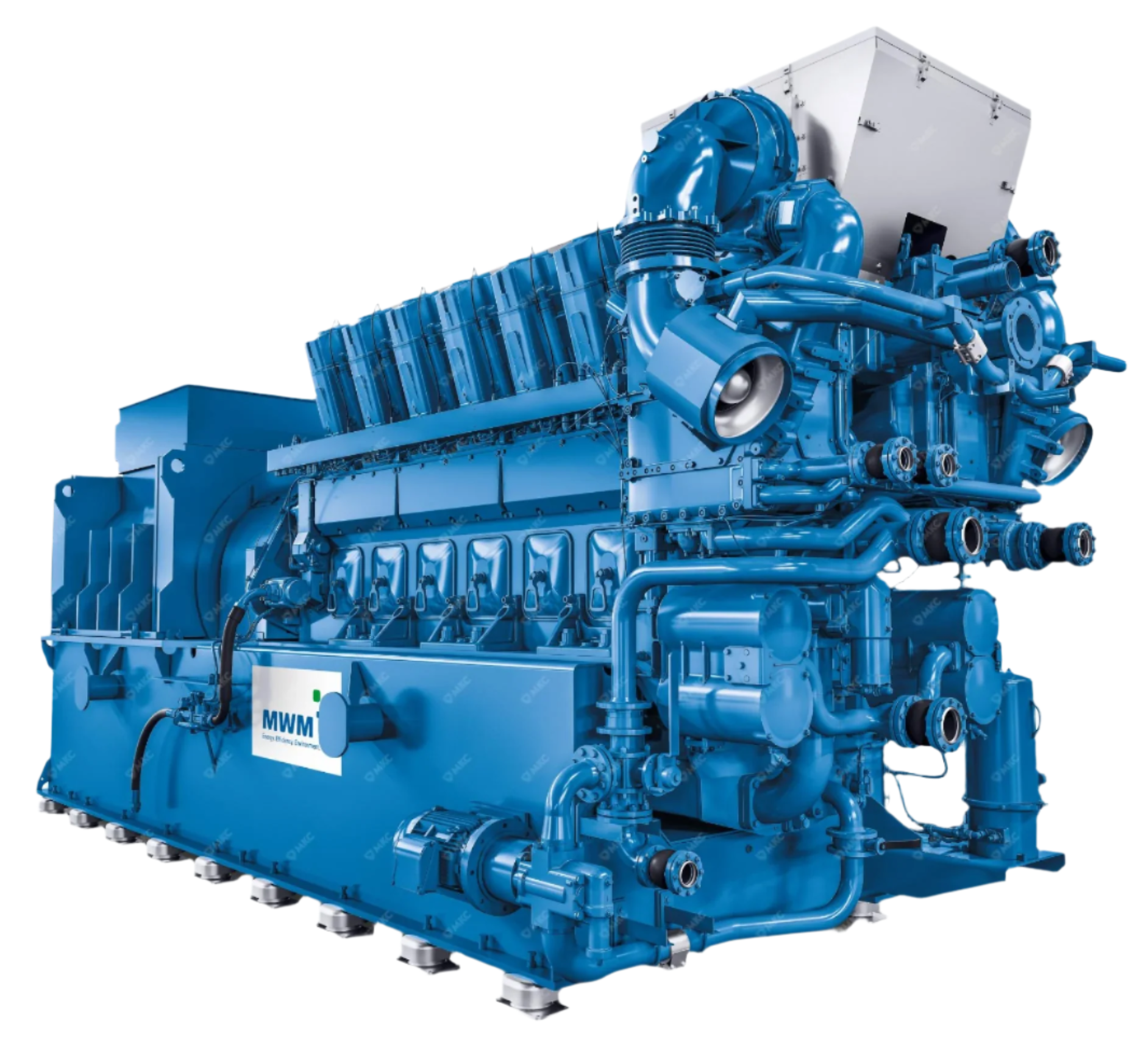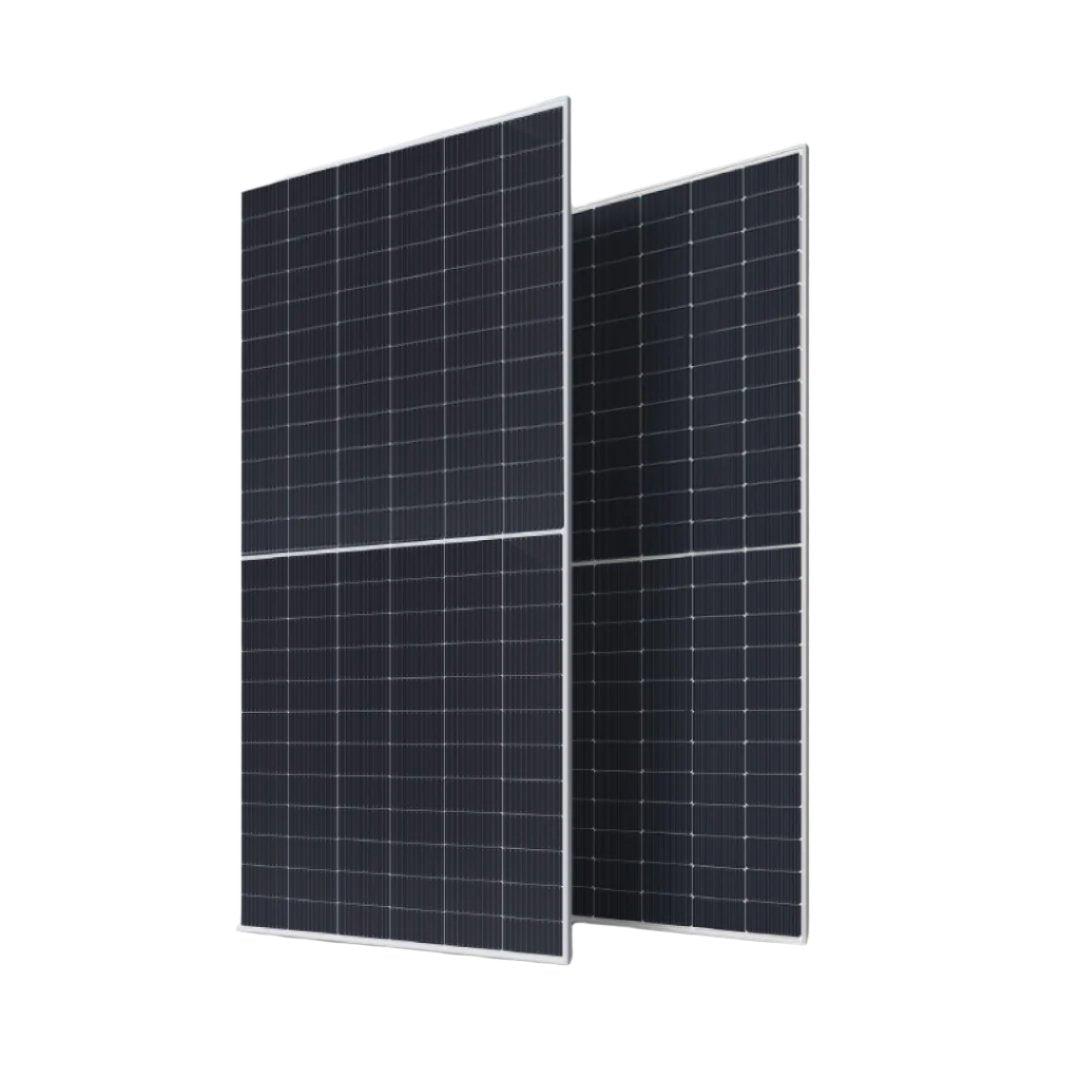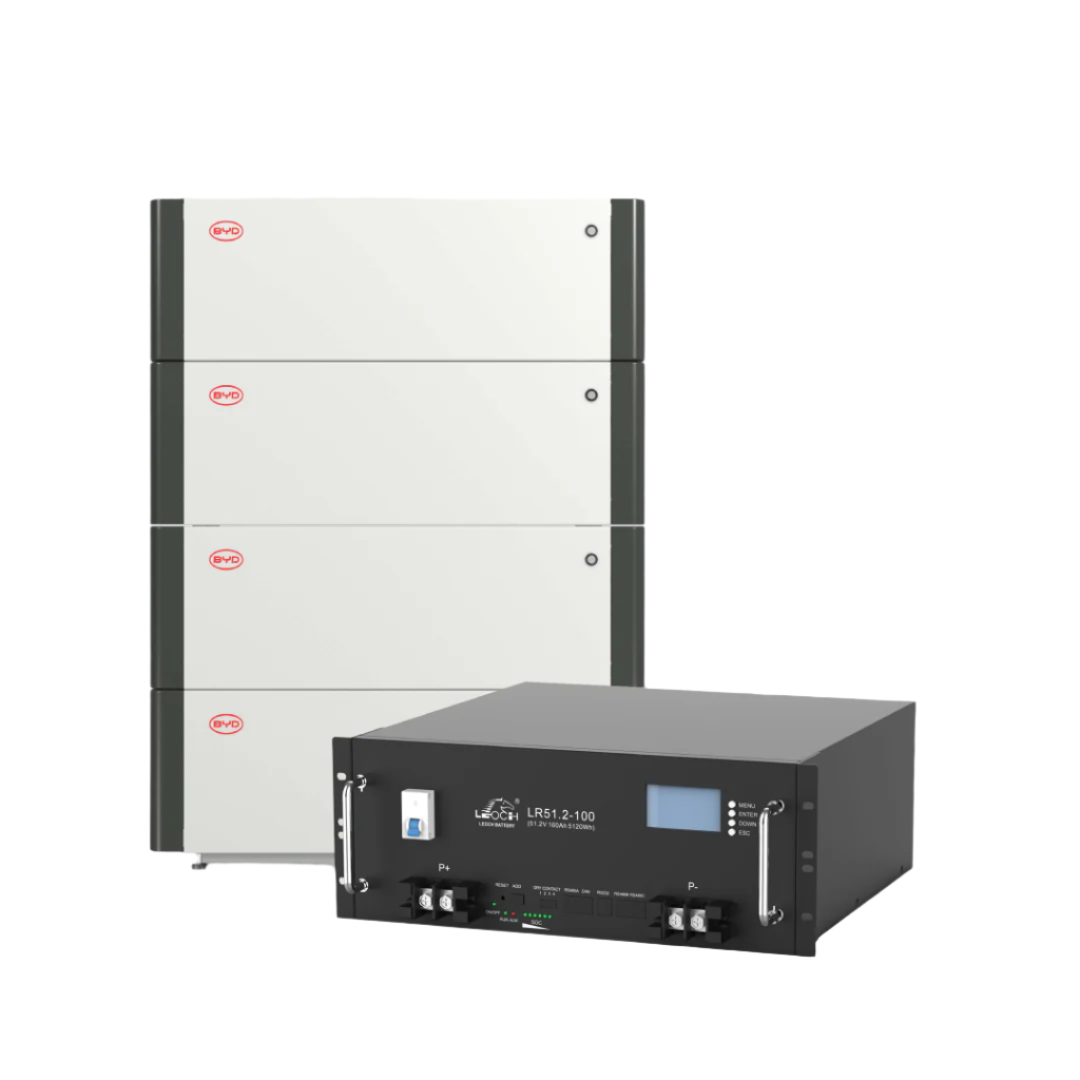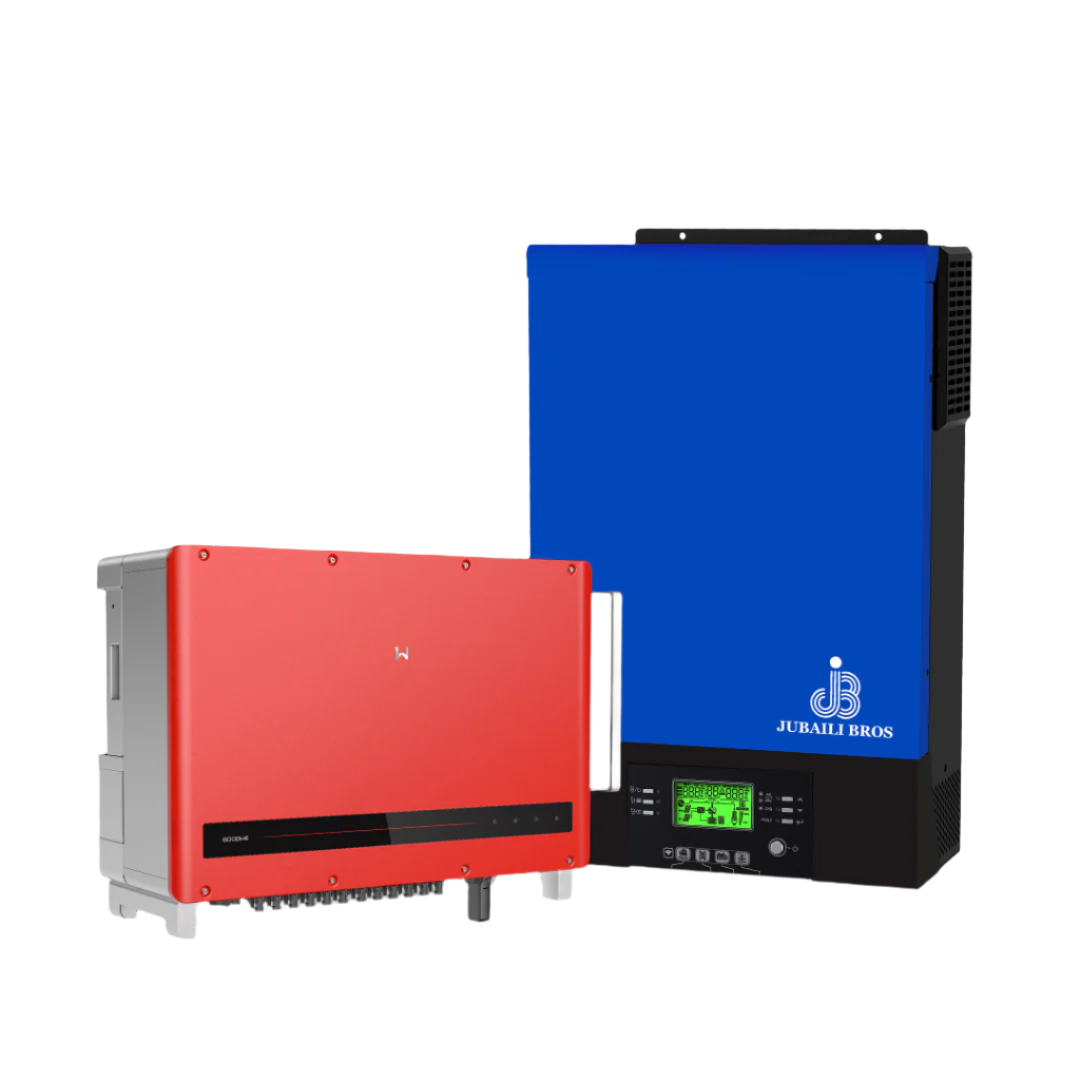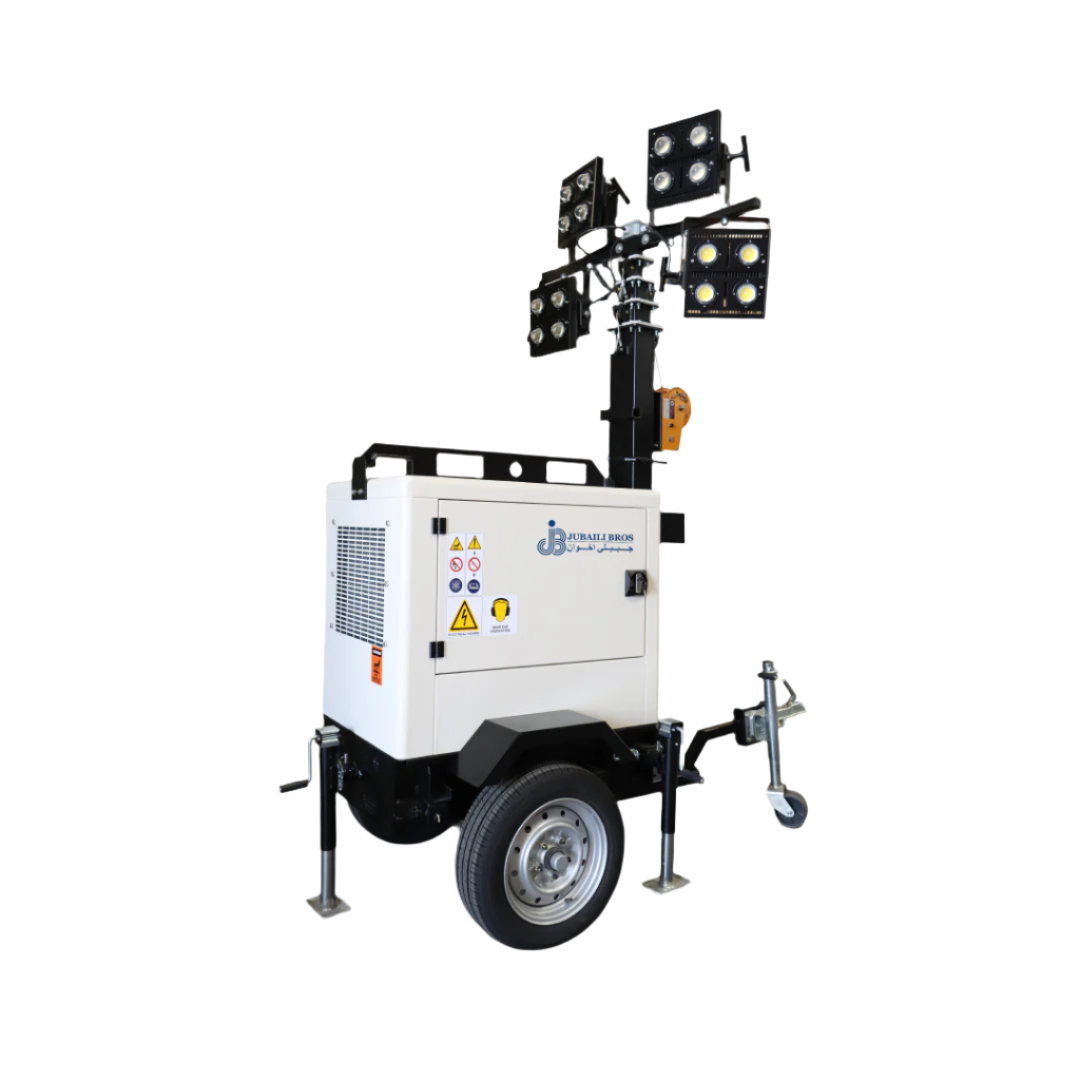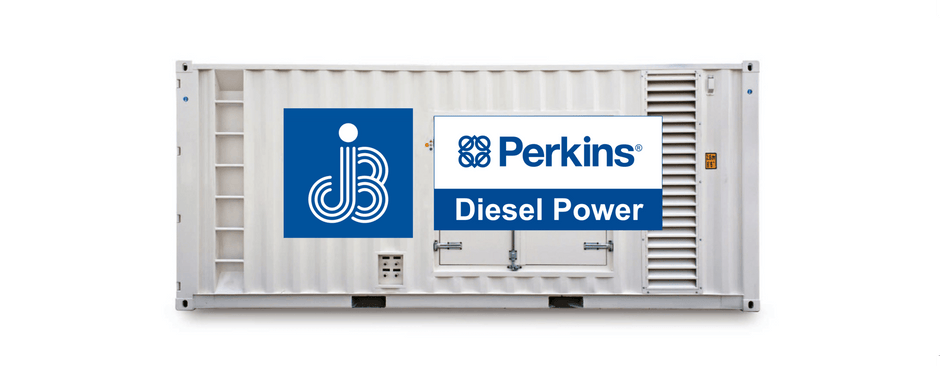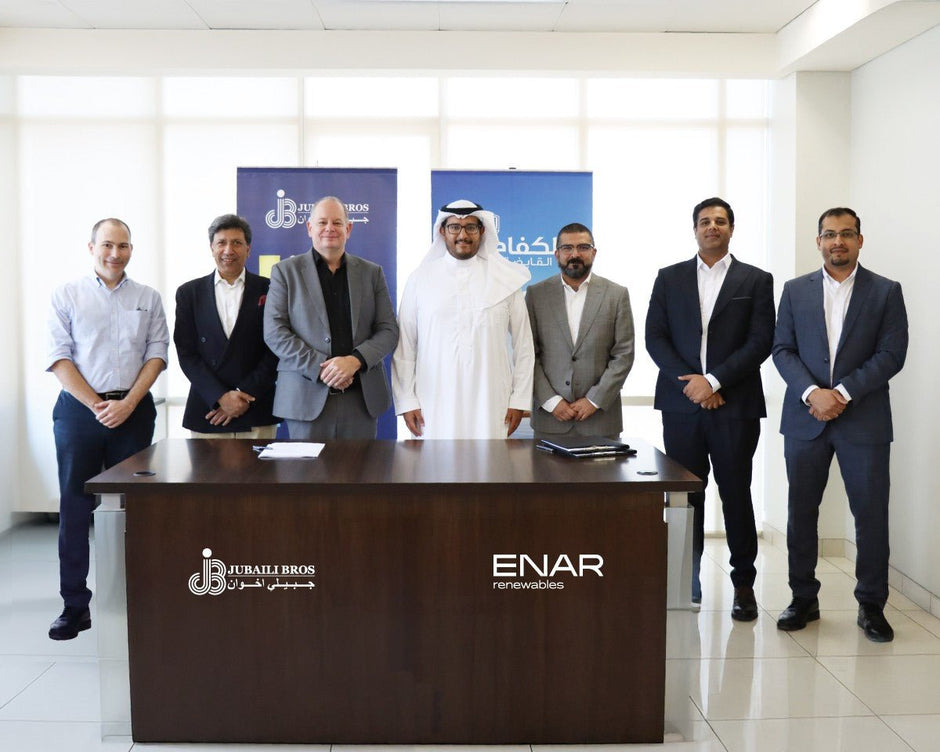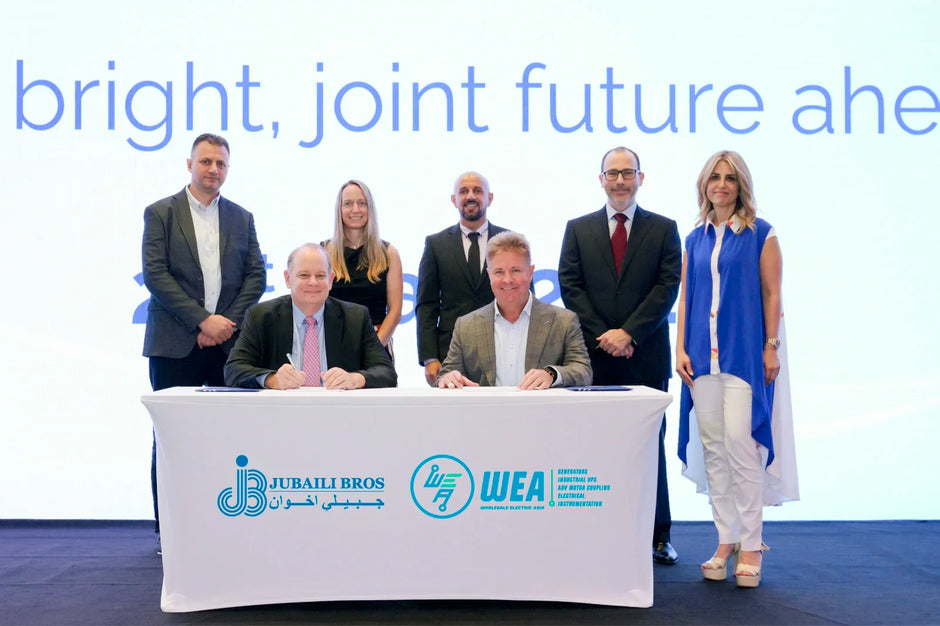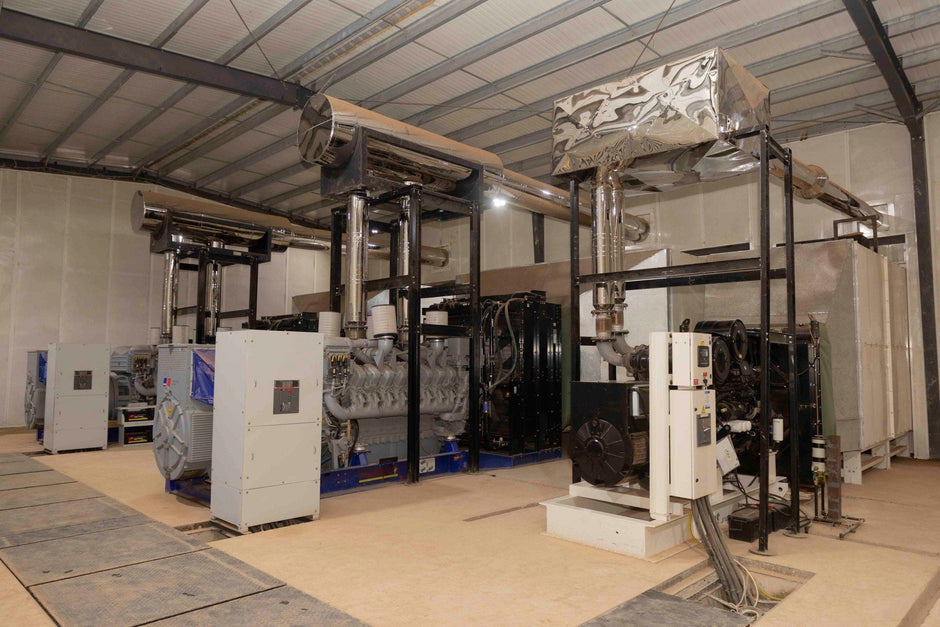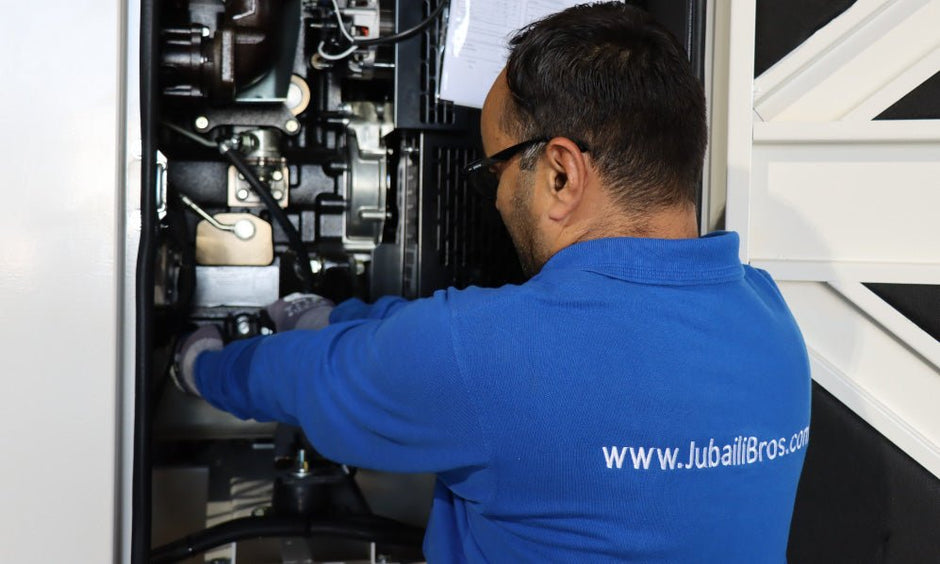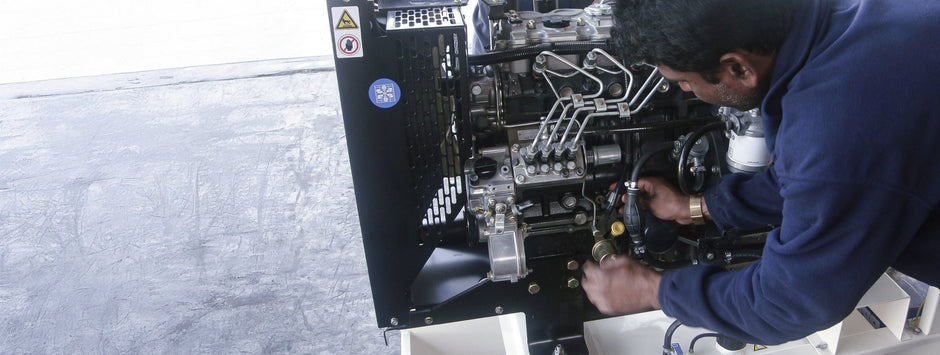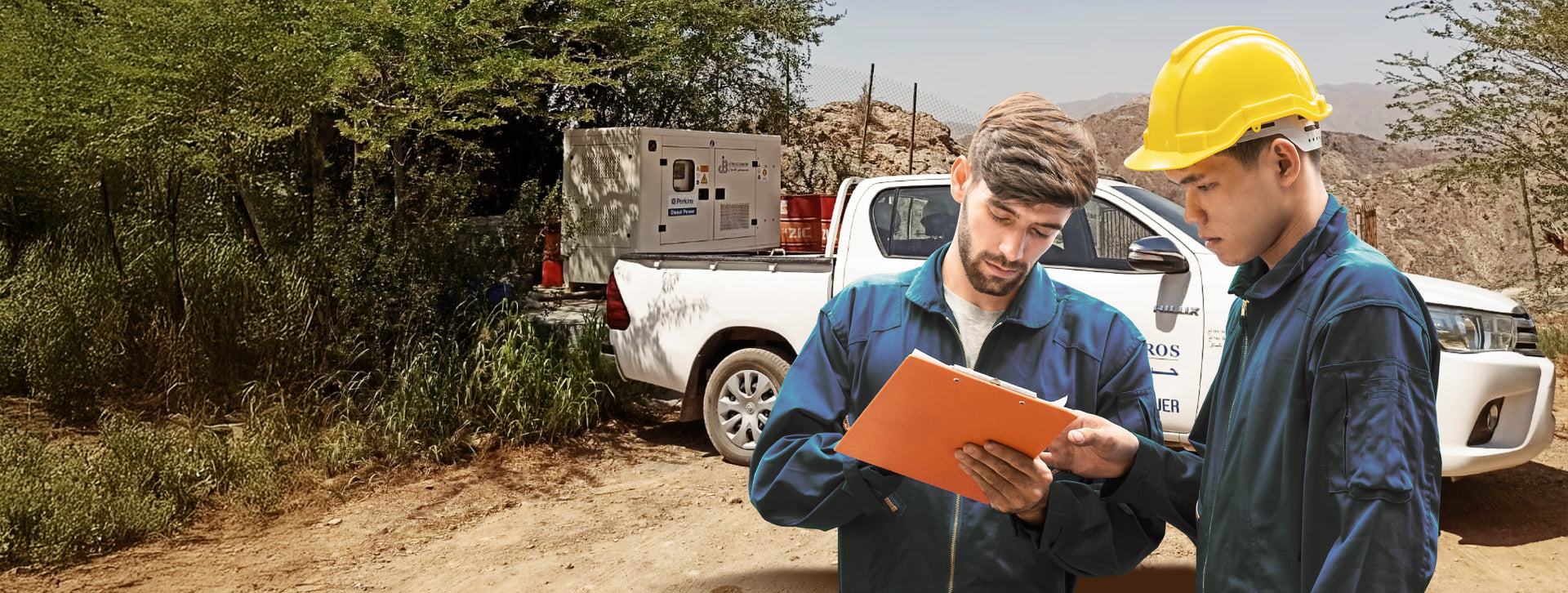When a diesel engine converts chemical energy into mechanical power, only about one-third becomes useful shaft work. The remaining two-thirds are rejected as heat—roughly half through the exhaust system and half through the cooling-air stream around the engine and alternator. If that heat is not removed promptly, metal temperatures rise, lubricating oil degrades, and the genset may derate or shut down. A well-designed cooling and ventilation system is therefore as critical as the generator’s kVA rating.
Heat Rejection and Why Cooling Matters
Continuous high coolant temperatures can accelerate liner polishing, head gasket failures, and turbocharger fouling. On the other hand, over-cooling promotes cylinder glazing and causes white smoke at part load. The target range is a jacket-water outlet temperature between 85–95 °C, while keeping charge-air temperature low enough to support efficient combustion.
Primary Engine Cooling Circuit
Modern four-stroke diesel engines are water-cooled. An engine-driven pump circulates a glycol-water mix through the block and cylinder head, then out to a radiator where an axial fan rejects the heat to ambient air. After cooling, the fluid returns to the engine inlet.
- Thermostat: Regulates bypass flow to ensure fast warm-up and steady operating temperature.
- Expansion tank: Accommodates thermal expansion and allows air bleeding from the system.
- Radiator core: Finned aluminum or copper tubes sized for full load heat rejection plus safety margin.
- Fan and belts: Engine-driven or electric; must overcome total static pressure from intake and exhaust airflow paths.
Set-Mounted Radiators
Most standalone generators come with a set-mounted radiator and a pusher fan configured for through-set airflow. Air enters at the alternator end, moves across the engine block, and exits through the radiator. This compact setup is cost-effective and easy to install, but it requires well-designed louvers and ducts. Static pressure should not exceed 125–150 Pa to maintain fan efficiency.
Remote Radiators and Heat Exchangers
In applications where direct airflow is restricted—such as soundproof enclosures or basements—engineers often opt for remote cooling:
- Remote air-cooled radiators: Electric fan-driven units installed on rooftops or outdoor pads.
- Shell-and-tube heat exchangers: Use a constant supply of cool water or seawater to absorb engine heat.
Remote systems enable full acoustic isolation of the generator room but require careful piping design. Excessive pressure drop in the coolant circuit can lead to cavitation or inadequate flow. Turbocharged engines with ATAAC systems (air-to-air charge-cooled) may require reinforced hoses and supports for pressurized air routing.
Ventilation Requirements
Even with a remote radiator, ventilation inside the generator room remains essential to remove:
- Heat radiated from the engine, alternator, and exhaust system
- Combustion by-products and oil mist
- Residual heat from equipment during operation
To limit internal temperature rise to no more than 7 °C above ambient, use the following ventilation rule of thumb:
Ventilation flow (m³/s) = 0.14 × gross kW heat load ÷ ΔT
where ΔT is the allowable temperature rise inside the room.
Calculating Total Heat Load
The radiator handles coolant heat, but room ventilation must account for additional sources:
- Exhaust system radiation: Approximately 2–4% of fuel energy
- Alternator losses: 2–3% of electrical output
- Mechanical friction: 1–2% of input energy
Engine data sheets typically list these values. The total is your room’s sensible heat load, distinct from the exhaust gas thermal output.
Tropical vs Temperate Cooling Packages
Generators operating in hot climates, such as the Middle East or sub-Saharan Africa, require tropical-grade radiators. These are rated for up to 50 °C ambient temperature and typically include:
- Higher-density cooling fins
- Increased fan horsepower
- Improved airflow capacity
Using a temperate-rated radiator (25 °C max) in a tropical environment often results in chronic overheating and unplanned shutdowns.
Cooling Design Checklist
- Check radiator sizing against local ambient conditions and elevation; apply derating if needed.
- Limit total static pressure (intake plus exhaust) to within fan design limits—typically under 150 Pa.
- Position fresh-air intake downwind of exhaust outlets to avoid hot air recirculation.
- Install back-draft dampers or motorized louvers to prevent sand, rain, or debris ingress.
- Insulate exhaust piping to reduce radiant heat and improve personnel safety.
- Maintain clearances of 600–1,000 mm around radiators for airflow and service access.
- Use the correct coolant mixture: 50/50 for frost protection, or 30/70 for high-temperature climates.
Commissioning and Maintenance Best Practices
- Record top-tank and bottom-tank coolant temperatures at both no-load and full-load.
- A temperature rise over 10 °C across the radiator suggests blocked airflow or fouling.
- Annually clean radiator cores (with fans turned off).
- Check and adjust fan belt tension or VSD settings as applicable.
- Test coolant chemistry—pH and dissolved solids—to prevent corrosion and scaling.
- Verify the accuracy of temperature sensors that control shutdown protection.
Case Study: Data Centre in Dubai
A 2.0 MVA standby generator was specified inside a Level 2 acoustic enclosure. The site ambient temperature reached 46 °C, with limited space for air intake. Engineers selected a rooftop-mounted dual-circuit remote radiator, which removed 200 kW of thermal load from the generator room. This allowed downsizing the ventilation system to 45 m³/s and reduced fan energy consumption by 18 kW—translating into annual energy savings of over AED 40,000.
Conclusion
Neglecting generator cooling and ventilation design can result in overheated engines, unexpected shutdowns, and project setbacks. By selecting the right radiator, calculating ventilation flow accurately, and applying derating where required, you ensure consistent performance—even in 50 °C desert conditions.
Contact Jubaili Bros to discuss cooling design and ventilation strategies for your generator installation.

